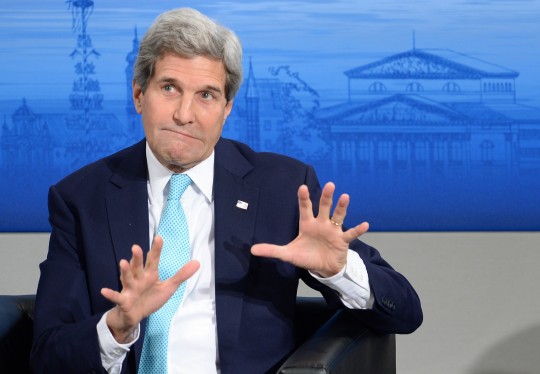Secretary of State John Kerry admitted before Congress on Wednesday that the United States is aware of a secret Iranian facility that an Iranian opposition group identified this week as part of an undisclosed parallel nuclear program.
The group, the National Council of the Resistance of Iran (NCRI), has a history of disclosing the existence of Iranian nuclear facilities that the United States has been later forced to confirm were indeed part of a clandestine nuclear program.
Kerry, under questioning before the House Foreign Affairs Committee, acknowledged that the United States has evidence of the facility, but declined to elaborate to lawmakers about its nature.
"Did the [Iranian] regime tell us about existence of this new nuclear facility," Rep. Dana Rohrabacher (R., Calif.) asked Kerry at the hearing.
"What you're saying is it's a nuclear facility," Kerry responded. "That is yet to be determined, but we know about the facility, yes."
"So had they disclosed that facility to us?" Rohrabacher asked.
"It has not been revealed yet as a nuclear facility," Kerry insisted. "It is a facility that we are aware of, which is on a list of facilities we have. I'm not going to go into greater detail, but these things are going to have to be resolved [in negotiations] as we go forward."
Questions about the site come in the wake of a report released Tuesday by an Iranian dissident group claiming to provide evidence of "an active and secret parallel nuclear program" in the suburbs of Tehran.
The facility is said to be an "underground top-secret site currently used by the Iranian regime for research and development with advanced centrifuges for uranium enrichment," according to a copy of the findings by NCRI, also known as the MEK.
Years-long concerns about several secret Iranian nuclear facilities have plagued advocates of an emerging Iran deal and provided ammunition to critics who maintain that the agreement would leave Iran with sufficient infrastructure to continue producing a nuclear weapon.
The existence of such sites has been known for some time to U.S. intelligence agencies and runs counter to the Obama administration’s narrative that Iran can be trusted to comply with a nuclear deal.
"There has never been a time in the past 15 years or so when Iran didn’t have a hidden facility in construction," a senior Obama administration official admitted to the New York Times in 2013.
Concerns among lawmakers and others have been amplified in recent days following the revelation by the Associated Press that the United States is considering permitting Iran to keep its nuclear infrastructure in tact.
The deal is shaping up to be a two-phased agreement, meaning Tehran would be subject to restrictions on its work for around a decade before they are lifted, the AP reported.
